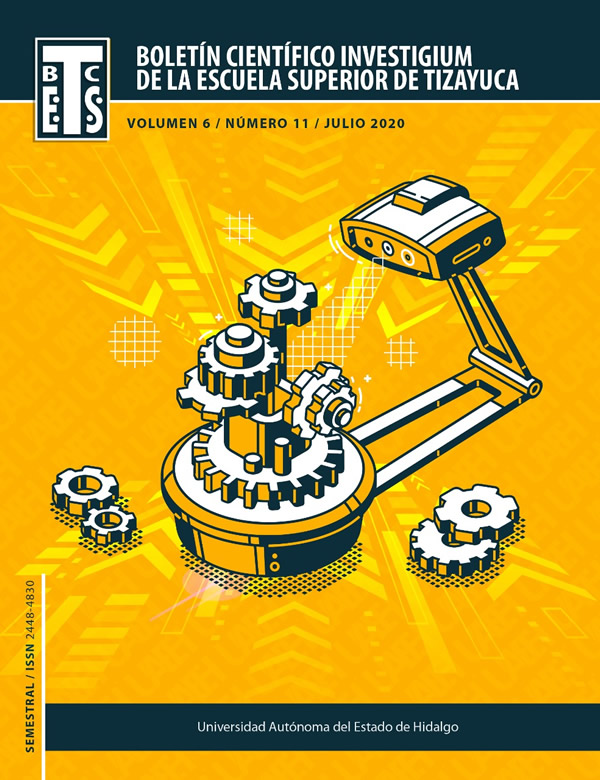Interactive Technologies in the Teotihuacan Archeologic Zone
DOI:
https://doi.org/10.29057/est.v6i11.5129Keywords:
Interactive technologies, learning, interactive museums, Teotihuacán archeological zoneAbstract
Currently, technologies are being applied to different fields of research, among them is learning, within this area, technologies seek to understand how it is that human bei0ngs learn and how they are more likely to retain the information; All these advances have been applied in places such as museums, these are referred to as "cultural spaces dedicated to the collection of pieces of heritage value for a region", this coupled with the technological innovations that have emerged in the area of learning.Spaces called “Interactive Museums” with the support of technologies are emerging, seeking to provide information in a more attractive way for visitors, currently there are several cases and every day, due to the success generated in recent decades: That is why with this research It seeks to know how much is the impact that interactive technologies would have on the visitor and what activities would be successful in retaining information if they were applied to a cultural space that is not a museum, this is how it is proposed to the Archaeological Zone of Teotihuacán as a study space for a proposal for the implementation of interactive technologies in favor of learning the place, this because of the great value it has as a world heritage site and the lack of information and care suffered by the Area.
Downloads
References
Bedolla, A. G. (17 de junio de 2015). Instituto Nacional de Antropologia e Historia. Recuperado el 10 de agosto de 2019, de Medios interactivos en museos deben potenciar su función educativa: https://inah.gob.mx/boletines/329-medios-interactivos-en-museos-deben-potenciar-su-funcion-educativa
Cardona, H., Xavier, F., & Campillo, R. (2009). Interactividad didactica en museos. redalyc, 91-96. Obtenido de INTERACTIVIDAD DIDÁCTICA Y MUSEOS: https://www.redalyc.org/pdf/3241/324127628010.pdf
Datatur. (2019). Datatur. Recuperado el 2 de Agosto de 2019, de llegadas a museos y zonas arqueologicas: https://www.datatur.sectur.gob.mx/SitePages/ActividadesCulturales.aspx
Espacio visual Europa. (13 de julio de 2017). Eve museo einnovacion . Obtenido de Museo y adapacion tecologica: https://evemuseografia.com/2017/07/13/museos-y-adaptacion-tecnologica/
GAFA. (19 de Mayo de 2019). Obtenido de 5 Grandes museos interactivos del mundo: https://gafa.mx/museos-interactivos-mundo/
Garcia-Allen, J. (2019). Psicologia y Mente. Recuperado el 15 de agostto de 2019, de Psicologia y Mente: https://psicologiaymente.com/desarrollo/tipos-de-aprendizaje
Meritxell, M. (2002). Dialnet. Recuperado el 12 de Agosto de 2019, de interactividad e interaccion: file:///C:/Users/BIBLIOTECA/Downloads/Dialnet-InteractividadEInteraccion-1252603.pdf
Ortega, C. V. (2017). El Patrimonio Arqueológico de Teotihuacán. Responsabilidad Social. Recuperado el 9 de agosto de 2019, de https://arqueologiamexicana.mx/mexico-antiguo/el-patrimonio-arqueologico-de-teotihuacan-responsabilidad-social.
Red Nacional de Información Cultural. (13 de Noviembre de 2018). Sistema de informacion cultural. Obtenido de Museo interactivo de tecnologia aplicada : https://sic.cultura.gob.mx/ficha.php?=mtableuseo&table_id=1810
Vallejo, N. (28 de JULIO de 2015). ojulearning. Obtenido de 15 EJEMPLOS DE TECNOLOGIAS EN MÉXICO: https://ojulearning.es/2015/07/15-ejemplos-de-tecnologia-en-museos/


















